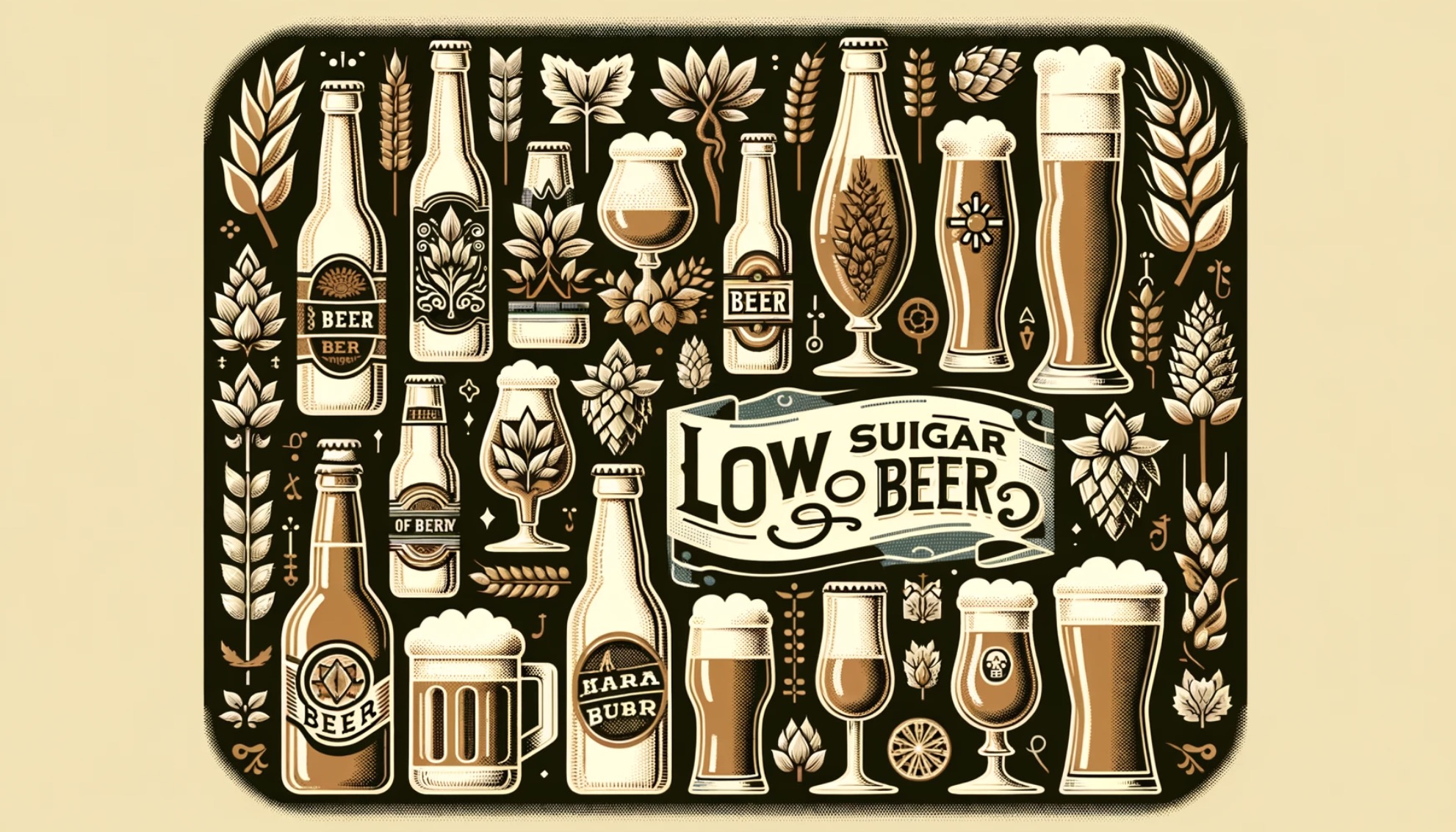Are you a beer enthusiast wondering what sets lagers apart from other types of beers? Many people are surprised to learn that there is actually quite a big difference between larger and stout beers.
Lager brewing requires patience, skill, and dedication as it takes longer for the yeast in this type of beer to ferment properly than with ales or stouts.
In this blog post, we’ll take an in-depth look at the differences between lagers and other types of beer such as dark lagers, pilsners, Porter, brown ales India Pale Ales (IPA), Belgian-Style Ale’s Wild & Sour Beers plus more specialty brews.
We will also cover why some brewers prefer one style over another when crafting their own creations. So if you’re curious about the difference between larger and stout beers – stay tuned!
Table of Contents:
- Lagers vs Other Types of Beer
- Dark Lagers
- Pilsners
- Porter
- Ales
- Brown Ales
- India Pale Ales
- Belgian-Style Ales
- Wild and Sour Beers
- Others and Specialty Beers
- Lagers vs. Stouts
- Types of Lagers
- Types of Stouts
- Specialty Beers for Home Brewers
- Brewing Tips for Home Brewers
- FAQs in Relation to What Is the Difference Between Larger and Stout Beers?
- Conclusion
Lagers vs Other Types of Beer
Lagers and other types of beer each have their own distinct characteristics that set them apart. Lagers are typically light in color and body, with a clean, crisp flavor.

They are fermented at cooler temperatures than ales, resulting in fewer esters and less fruity aromas.
Pilsners are a type of lager that is slightly hoppier than the average lager, while dark lagers offer a more robust malt character with hints of caramel or toffee.
Porters are darker beers made from roasted malts which give them a unique flavor profile featuring notes of coffee or chocolate.
Brown ales also feature roasted malts but tend to be lighter in body and more balanced between sweet and bitter flavors. India Pale Ales (IPAs) use hops for bitterness as well as aroma; they can range from light-bodied to full-bodied depending on the variety used.
Belgian-style ales often contain spices such as coriander or orange peel for added complexity; these beers can be quite strong due to high alcohol content but usually have an enjoyable balance between sweet and tart flavors.
Wild & Sour Beers include sour styles like Berliner Weisse or Gose which rely on wild yeast strains for fermentation; these beers often feature complex acidity levels ranging from mild tartness to intense sourness depending on the strain used during brewing process.
Finally, specialty beers encompass any style not mentioned above such as fruit beer, smoked beer, wheat beer etc.
These beers may contain additional ingredients like fruits or herbs that contribute unique aromas and flavors not found in traditional styles of beer making them great options for those looking to explore new tastes.
Ultimately when choosing between a lager or another type of beer it comes down to personal preference so don’t hesitate to experiment until you find what works best for you.
Lagers are a popular choice among beer drinkers, but they are not the only type of beer available. In the next section, we will explore the differences between lagers and other types of beer such as stouts and ales.
Main Takeaway: When choosing between a lager or another type of beer, it comes down to personal preference. There are many styles of beer available, from light and crisp lagers to dark porters and IPAs with hoppy bitterness. Specialty beers offer unique flavors not found in traditional styles while wild & sour beers rely on wild yeast strains for fermentation resulting in complex acidity levels. Experimenting is the best way to find what works best for you!
Types of Lagers
Lagers are a type of beer that have been around for centuries and are still popular today. They come in many different varieties, from light to dark, and can be enjoyed by all types of beer drinkers.
But a lager beer is not just one kind but a wide variety of beers brewed using similar techniques.
Dark Lagers are a type of lager that is darker in color than other lagers due to the use of roasted malts during the brewing process. These beers tend to have a more intense flavor profile with notes of chocolate, coffee, and caramel. Examples include Schwarzbier (black beer) or Dunkel (dark).
Pilsners are another variety of lager that originated in the Czech Republic but has since become popular worldwide. Pilsners tend to be lighter in color than dark lagers and usually feature floral hop aromas along with subtle malt sweetness. Examples include Pilsner Urquell or Budweiser Budvar Original Lager.
Brown Ales are also considered part of the lager family but they typically have more complex flavors than their lighter counterparts due to their higher alcohol content and use of specialty malts such as Munich or Vienna malt which give them an amber hue along with nutty, malty flavors like caramel or toastiness. Examples include Newcastle Brown Ale or Samuel Smith’s Nut Brown Ale.
Overall, there is no shortage of different types of lagers available for home brewers who are looking for something unique yet familiar. With careful selection and proper fermentation techniques, one can create their own delicious brews using any one of these styles as inspiration.
Lagers are a diverse and popular type of beer, ranging from light and crisp Pilsners to dark and malty Brown Ales. Now let’s explore the different types of hard cider that can be brewed.
Dark Lagers
Dark lagers are a type of beer that is typically darker in color than other types of beer. They often have a higher alcohol content and are more flavorful than lighter beers, making them an excellent choice for those looking to enjoy a bolder flavor profile. Dark lagers can be enjoyed by themselves or with food.

The most common dark lager styles include Dunkel, Schwarzbier, Munich Dunkel, and Vienna Lager. Dunkels are characterized by their deep brown color and malty sweetness which comes from the use of roasted malts like Munich malt or Caramel malt. Schwarzbiers have similar characteristics but tend to be less sweet due to the use of black malt instead of caramel malt.
Munich dunkels also feature roasted malts but they tend to be slightly sweeter due to the addition of chocolate malts while Vienna lagers offer a balance between sweet and bitter flavors thanks to the combination of light and dark malts used in its production process.
When it comes to pairing food with dark lagers, there’s no shortage of options! Hearty dishes such as stews, roasts, sausages or even grilled meats pair perfectly with these robust brews as do rich desserts like chocolate cake or ice cream sundaes.
The high alcohol content makes them ideal for sipping on their own too – perfect for enjoying after dinner when you want something special without feeling overly full afterwards!
In terms of taste profiles, dark lagers tend towards being smooth yet complex – offering notes ranging from coffee-like bitterness through nutty sweetness all depending on how they’re brewed and what ingredients were used during production processes. This makes them great for exploring different flavor combinations when creating your own recipes at home too!
Overall, if you are looking for something unique yet still familiar enough not to scare off novice drinkers, dark lagers could be worth considering the next time you are out shopping for beer supplies. Please keep in mind that some styles may contain higher levels of alcohol and drink responsibly.
Dark lagers are a great way to enjoy the unique flavors of roasted malts without having to commit to a full-bodied stout. Next, let’s explore the differences between larger and stout beers.
Main Takeaway: Dark lagers are a type of beer that is typically darker in color and higher in alcohol content than other types. They offer a complex flavor profile, ranging from coffee-like bitterness to nutty sweetness, making them an excellent choice for those looking to explore different flavor combinations. Dark lagers can be enjoyed by themselves or with food and make for great after dinner drinks without feeling overly full afterwards.
Pilsners
Pilsners are a type of beer that originated in the Czech Republic. They are light in color and have a moderate alcohol content, usually ranging from 4-5%. Pilsners typically have a floral or herbal aroma, with a slightly sweet taste. The flavor profile is balanced between malt sweetness and hop bitterness.
The style was first developed by Bavarian brewer Josef Groll in 1842 using local ingredients such as Saaz hops and Moravian barley. This combination created an amber colored lager with an intense hop character that quickly became popular throughout Europe.
Modern pilsner recipes use pale malts for their base, which gives them their signature golden hue. These malts provide subtle flavors of biscuit and honey to balance out the hoppy bitterness from the hops used during brewing. Hops like Saaz, Hallertau Mittelfruh, Tettnang, Spalt Select or Styrian Goldings are often used to give pilsners their distinct spicy aromas and flavors of citrus fruit and grassy notes.

When it comes to food pairings, pilsners go well with lighter dishes such as salads or seafood dishes like fish tacos or grilled shrimp skewers due to its crispness cutting through heavier foods without overpowering them.
It also pairs nicely with spicier cuisines such as Mexican food because it helps refresh your palate after each bite while still complimenting the spices found in many Mexican dishes like enchiladas or burritos.
Overall, pilsner is a highly versatile beer when it comes to pairing with different types of cuisine. Its mild flavor profile provides enough complexity for craft beer drinkers looking for something unique yet familiar.
Pilsners are light and refreshing beers that are often enjoyed in the summertime. They can be a great starting point for those new to brewing, so let’s move on to learn about stouts!
Main Takeaway: Pilsner is a light, golden-hued beer with a moderate alcohol content and floral or herbal aroma. It pairs well with lighter dishes such as salads and seafood, as well as spicier cuisines like Mexican food due to its crispness cutting through heavier foods without overpowering them. Its mild flavor profile makes it an ideal choice for craft beer drinkers looking for something unique yet familiar.
Porter
Porter is a type of dark beer that was first brewed in London in the 18th century. It is made with roasted malt, which gives it a dark color and a slightly bitter flavor. Porter has an ABV (alcohol by volume) range of 4-6%, making it one of the lower alcohol beers available.
The taste of porter can vary depending on the ingredients used, but generally speaking, it will have notes of chocolate or coffee along with some caramel and toffee flavors. It also tends to be slightly sweet due to its use of roasted malts. The bitterness comes from hops added during brewing process, giving porter its unique flavor profile.
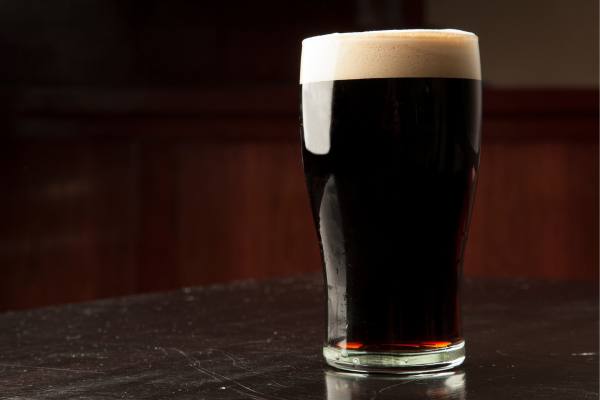
Porter is often used as a base for other types of beer such as stout or imperial stout, which are stronger versions with higher ABVs ranging from 8-12%. These beers tend to have more intense flavors than regular porters due to their higher alcohol content and longer aging times.
In addition to being used as a base for other styles, porters can also be blended with lighter beers like lagers or wheat ales for added complexity and flavor depth. This technique is known as “black & tan” blending because the two different colored beers blend together when poured into glasses creating an attractive visual effect similar to that found in traditional Irish pubs around the world.
Overall, porter is an excellent choice for home brewers looking to try something different than the typical lager or pale ale. It has a rich malty character and subtle sweetness that are balanced out by hop bitterness, making it accessible even for novice drinkers who may not be familiar with craft beer yet while still providing plenty of room for experimentation.
Porter is a dark beer that has strong malt flavors and aromas, making it a great choice for those who enjoy bolder beers. Next, we’ll look at the differences between larger and stout beers.
Main Takeaway: Porter is a dark beer with a slightly bitter flavor, an ABV of 4-6%, and notes of chocolate or coffee. It can be used as the base for other styles such as stout or imperial stout, which have higher ABVs and more intense flavors. Porter can also be blended with lighter beers like lagers or wheat ales to create unique flavor combinations. With its rich malty character and subtle sweetness, porter is an excellent choice for home brewers looking to try something different than the typical lager or pale ale.
Ales
Ales are one of the most popular types of beer, and they come in a variety of styles. Ales are brewed with top-fermenting yeast, which gives them their distinct flavor profile. They tend to be more full-bodied than lagers and have a slightly fruity taste.
Pale ales are some of the most common ales available today. These beers usually feature pale malts that give them their light color and crisp flavor. Popular examples include India Pale Ale (IPA), American Pale Ale (APA) and English Bitter.
Brown ales are also quite popular, although not as widely known as pale ales. Brown ales typically use darker malts for their coloration, giving them a nutty or caramel flavor profile that is often balanced by hop bitterness. Examples include English Brown Ale, Belgian Dubbel and American Brown Ale.

Wheat beers are another type of ale made from wheat instead of barley malt like other beers do; this results in a lighter body with more subtle flavors compared to other types of ale such as porters or stouts. Hefeweizen is an example of this style; it has notes of banana or clove due to its special yeast strain used during fermentation process..
Stout is an incredibly dark type of beer with strong roasted coffee-like flavors coming from the dark malts used during the brewing process.
These can range from sweet milk stout to bitter dry Irish stout, depending on how much hops were added during the brewing process. Porter is similar to stout but less intense; it usually has a sweeter flavor profile due to different kinds, amounts and types of malt being used in its production.
Ales are a type of beer that range from light to dark in color, and have a wide variety of flavors. The next heading will explore the differences between lagers and stouts.
Main Takeaway: Ales come in a variety of styles, from pale ales to brown ales and wheat beers. Stouts and porters are darker types of beer with strong roasted coffee-like flavors coming from the dark malts used during the brewing process. Wheat beers have lighter bodies with more subtle flavors compared to other types of ale. Each type has its own unique flavor profile that can range from sweet to bitter depending on how much hops were added during the brewing process.
Stouts
It has a dark brown to black color and a roasted malt flavor with hints of coffee and chocolate. The bitterness level can range from low to high depending on the recipe used. Porter is usually brewed with pale malts, crystal malts, and roasted barley for added complexity. It typically has an ABV between 4-6%.
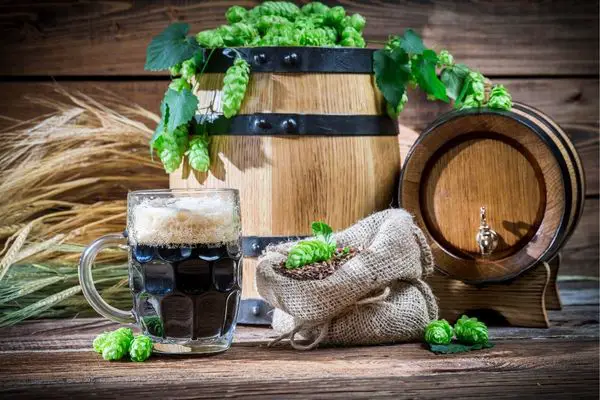
India Pale Ales (IPAs) are another type of stout beer that have become increasingly popular over the past few years. IPAs are characterized by their intense hop aroma and flavor as well as their higher alcohol content compared to other styles of beers.
They usually contain four or more different types of hops which give them a unique citrusy, piney, floral taste profile. IPAs generally have an ABV between 6-8%.
Belgian-Style Ale is a type of stout beer, but it differs from the others due to its fruity esters and spicy phenols produced during fermentation by Belgian yeast strains such as Trappist ale yeast or Saison yeast.
These ales tend to be sweeter than other stouts because they often use sugar adjuncts like candi syrup or honey in addition to regular malt sugars for fermentable sugars during brewing process. The alcohol by volume (ABV) range for these beers typically falls between 5% and 9%.
Stouts are a type of beer with a full-bodied flavor and higher alcohol content than other styles. Next, we’ll explore the differences between larger and stout beers to help you decide which one is best for your hard cider brewing project.
Lagers vs. Stouts
Lagers and stouts are two of the most popular types of beer, but they differ in many ways. A lager is a type of beer that is brewed using bottom-fermenting yeast and cold temperatures.
It has a crisp, clean taste with low hop bitterness and can range from light to dark in color. Lagers are often referred to as “lawnmower beers” because they are easy drinking and refreshing.
Stouts, on the other hand, are darker beers made with top-fermenting yeast at higher temperatures than lagers. They have more complex flavors due to their higher alcohol content and roasted malt character which gives them notes of coffee or chocolate. Stouts also tend to be fuller bodied than lagers with a creamy texture from nitrogen gas bubbles added during brewing process.
The main difference between lagers and stouts lies in their ingredients list. While both use barley malt as a base ingredient, stouts rely heavily on unmalted grains such as oats, while traditional German style lagers do not contain any unmalted grains at all.
This gives each style its own unique set of flavor profiles; from the sweet malty tones found mostly in stout recipes to the crisp hoppy notes typical for most varieties belonging to the category known simply as ‘lager’.
Additionally, temperature plays an important role when it comes to fermentation process; brewers aiming towards producing certain types must take extra care so that desired outcome is achieved without too much effort put into production phase.
Understanding the differences between lagers and stouts can help home brewers create unique and delicious hard ciders. Next, we’ll explore how to brew hard cider using lager or stout beer as a base.
Main Takeaway: Lagers and stouts are two of the most popular types of beer, but they differ in many ways. Lagers are brewed using bottom-fermenting yeast and cold temperatures for a crisp, clean taste with low hop bitterness. Stouts use top-fermenting yeast at higher temperatures to create complex flavors like coffee or chocolate and have higher alcohol content than lagers. The main difference between them lies in their ingredients list; while both use barley malt as a base ingredient, stouts rely heavily on unmalted grains such as oats whereas traditional German style lagers do not contain any unmalted grains at all.
Read more about the difference between lagers and stouts here.
Brown Ales
Brown ales are a type of ale that is typically dark brown or amber in color. These beers tend to be malt-forward, with notes of caramel and toffee. Brown ales can also have hints of chocolate or coffee. They usually range from 4% to 6% ABV, making them an ideal choice for those looking for a lighter beer option without sacrificing flavor.

When it comes to brewing your own brown ale at home, there are several key ingredients you’ll need: malted barley, hops, yeast and water. The malted barley provides the sweetness and body while the hops add bitterness and aroma.
Yeast helps convert the sugars into alcohol during fermentation while water acts as a solvent for all other ingredients. When combined together correctly, these four elements create a unique flavor profile that’s sure to please any craft beer enthusiast!
When it comes time to choose your hops for your brown ale recipe, you’ll want something that has earthy tones such as East Kent Goldings or Fuggles – both varieties will give you great results when used in moderation.
For yeast selection, try using an English Ale strain like Wyeast 1098 which will help bring out subtle fruit flavors like plum and raisin in addition to giving off some nutty aromas too! Finally when adding adjuncts (additional fermentables) consider adding some crystal malt which will give your brew more complexity by providing additional sweetness along with deeper hues of red/brown coloration.
If you are looking for an easy drinking yet flavorful beer, the classic brown ale style is a great choice. It has a malty backbone that is balanced out by subtle hop character, making it suitable for any occasion – from relaxing on the porch after work to enjoying dinner with friends. Get creative and start brewing up something special today!
Brown Ales are a dark and flavorful style of beer that can be enjoyed by both novice and experienced brewers alike. Now, let’s take a look at the differences between larger and stout beers.
Main Takeaway: Brown ales are a type of ale that is typically dark brown or amber in color and range from 4% to 6% ABV. They have a malty backbone balanced out by subtle hop character, making them suitable for any occasion. To brew your own brown ale at home you’ll need malted barley, hops, yeast and water. Consider using East Kent Goldings or Fuggles hops and Wyeast 1098 yeast for best results!
India Pale Ales
India Pale Ales, or IPAs, are a type of beer that has become increasingly popular in recent years. They have a distinct flavor and aroma that sets them apart from other types of beers. IPAs are characterized by their high hop content and intense bitterness. The hops used to make an IPA give it its unique taste and aroma; they can range from citrusy to floral to earthy.
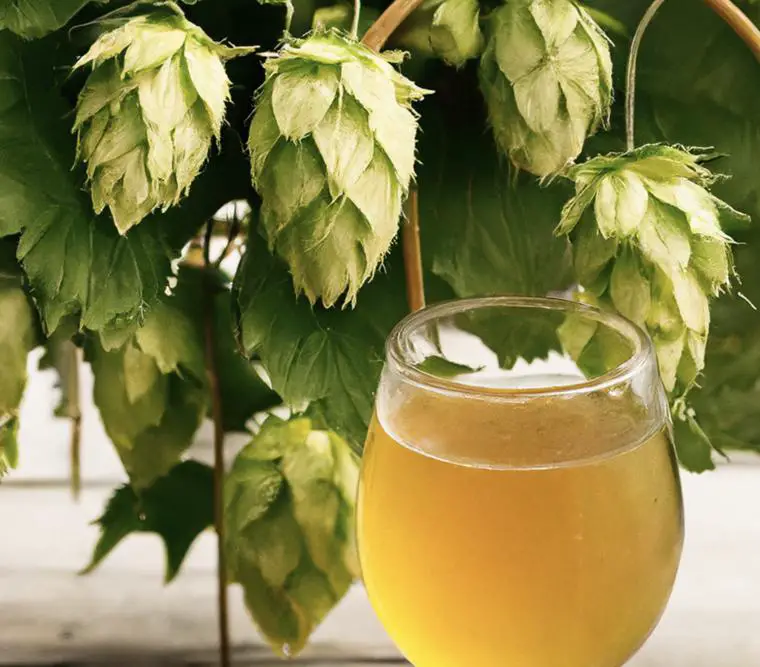
IPAs are typically higher in alcohol than other types of beer, ranging from 5-7% ABV (alcohol by volume). This makes them ideal for those looking for a stronger drink without sacrificing flavor.
The origin of the India Pale Ale dates back to the late 1700s when British brewers were trying to create a beer that could survive long sea voyages between England and India without spoiling. To achieve this goal, they increased the amount of hops used in the brewing process which helped preserve the beer during its journey across oceans while also giving it more body and complexity on the palate.
Today’s modern IPAs come in many different styles such as American-style IPAs which tend to be more heavily hopped with piney aromas;
English-style IPAs which have less hop character but still maintain some bitterness;
Belgian-style IPAs which combine fruity esters with spicy phenols; Imperial/Double/Triple IPAs which use even more hops resulting in an intensely bitter brew;
Session/Low Alcohol/Milder style ales which have lower alcohol levels but still retain some hoppy characteristics;
Fruit & Vegetable infused ales where fruits or vegetables like pumpkin or mango are added during fermentation for extra flavor complexity;
New England Style Hazy Juicy ales where yeast is left suspended creating hazy appearance with tropical fruit flavors being prominent due to low bitterness levels .
No matter what style you choose, there is sure to be an IPA that will satisfy your taste buds.
India Pale Ales have become increasingly popular in recent years due to their unique flavor and bold characteristics. Next, let’s take a look at the differences between larger and stout beers.
Main Takeaway: IPAs are a type of beer characterized by their high hop content and intense bitterness. They come in many different styles, from American-style IPAs to ImperialDoubleTriple IPAs, with each offering its own unique flavor profile. No matter what style you choose, there is sure to be an IPA that will satisfy your taste buds.
Belgian-Style Ales
Belgian-style ales are a unique and flavorful style of beer that have become increasingly popular in recent years. These beers are brewed with Belgian yeast, which gives them their distinct flavor profile. They range from light to dark in color, but all share the same characteristic fruity and spicy notes.
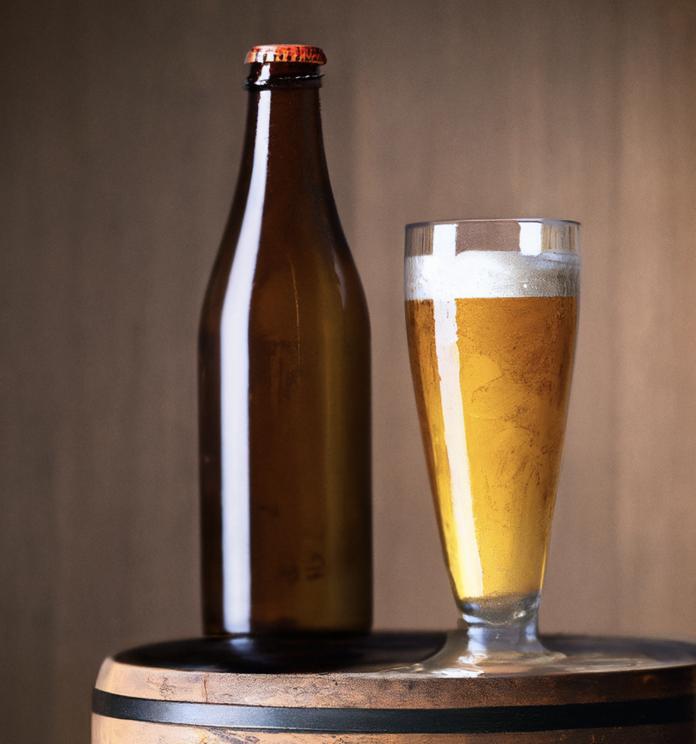
The most common types of Belgian-style ales include Witbier (white beer), Dubbel (double strength ale), Tripel (triple strength ale) and Quadrupel (quadruple strength ale). Each type has its own unique characteristics, ranging from subtle fruit flavors to intense spiciness.
Witbiers typically feature citrusy aromas such as orange or lemon peel, while Dubbels tend to be malty and sweet with hints of caramel or chocolate. Tripels often offer a complex blend of spices such as coriander or cardamom, while Quadrupels can be intensely hoppy with a strong alcohol content.
These beers also vary greatly in terms of bitterness levels; some are quite mild while others may be very bitter due to the use of hops during brewing process. In addition, many brewers add additional ingredients like fruits or herbs for added complexity and flavor depth.
When serving these beers, it is important to ensure they are kept at cellar temperature – between 50°F and 55°F. This will allow the full flavor profile of the beer to be experienced without making them too heavy on the palate.
Additionally, care should be taken not to overpour these beers as they contain high amounts of carbonation which can lead to an unpleasant drinking experience if not handled correctly.
Belgian-Style Ales are complex and flavorful, making them a great choice for both novice and experienced brewers alike. Next, we’ll discuss the differences between larger and stout beers.
Wild and Sour Beers
Wild & Sour beers are a unique style of beer that have become increasingly popular in recent years. They are characterized by their tart, acidic flavor and often contain fruit or other adjuncts to enhance the sourness. The wild yeast used to ferment these beers adds complexity and depth of flavor, making them a favorite among craft beer enthusiasts.
The most common type of Wild & Sour Beer is Lambic, which is made with spontaneous fermentation from wild yeasts native to Belgium’s Senne Valley region. This method produces an intensely tart beer with complex flavors ranging from fruity to earthy. Other types include Gueuze (a blend of young and old Lambics), Kriek (Lambic flavored with cherries) and Faro (Lambic sweetened with sugar).
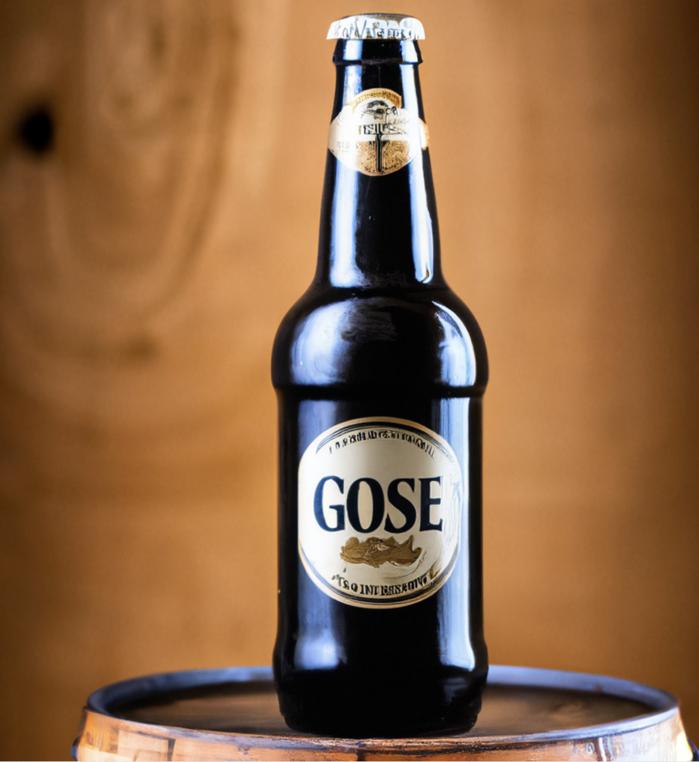
In addition to traditional Wild & Sour Beers, brewers around the world have begun experimenting with different ingredients such as fruits, spices, herbs and even vegetables in order to create new styles of sour beers. For example, Berliner Weisse is a light-bodied wheat ale brewed using lactic acid bacteria for its signature tartness.
Flanders Red Ale is aged in oak barrels for up to two years before being blended into a complex sour ale; American Wild Ales use locally sourced ingredients like berries or stone fruits for added complexity; and Fruit Sours combine various fruits into one refreshingly tart beverage.
No matter what type you choose, whether it is classic Lambic or something more experimental, wild and sour beers offer an exciting way for home brewers to explore the boundaries of brewing while creating delicious beverages that can be enjoyed year round.
Wild & Sour Beers are a unique and flavorful style of beer that can offer drinkers a variety of complex flavors. Next, let’s explore the differences between larger and stout beers.
Main Takeaway: Wild & Sour beers are a unique style of beer that have become increasingly popular in recent years. They offer an exciting way for home brewers to explore the boundaries of brewing, with traditional Lambic styles and more experimental options such as Berliner Weisse, Flanders Red Ale, American Wild Ales and Fruit Sours. These beers provide complex flavors ranging from fruity to earthy while adding depth and complexity to any beverage.
Summary and Specialty Beers
When it comes to beer, there are many different types and styles that can be brewed. While lagers and ales are the two main categories of beer, there is a wide variety of other beers that fall into the “others” or specialty category. These include dark lagers, porters, brown ales, India pale ales (IPAs), Belgian-style ales, wild & sour beers and more.
Dark Lagers: Dark lagers are a type of bottom-fermented beer with a darker color than traditional light lager beers. They have an intense malty flavor with notes of caramel and chocolate. Examples include Munich Dunkel, Schwarzbier and Doppelbock.
Porters: Porters are a type of dark ale made from roasted malts which give them their characteristic deep black color as well as hints of coffee or chocolate flavors in the taste profile. Popular examples include London Porter and Robust Porter.
Brown Ales: Brown Ales have a milder flavor than most other types of ale due to their lower hop content but still offer some subtle sweetness from the malt used in brewing them. Popular examples include Nut Brown Ale and English Brown Ale.
India Pale Ales (IPAs): IPAs are known for their strong hoppy bitterness which makes them popular among craft beer enthusiasts looking for something unique in terms of flavor profiles compared to other styles like stouts or pilsners . Some popular IPA varieties include American IPA , New England IPA , Double/Imperial IPA , Session IPA etc .
Belgian-Style Ales: Belgian-style ales typically use top fermentation techniques resulting in complex fruity aromas such as banana or clove along with spicy yeast flavors . Popular Belgian style beers would be Witbier , Saison , Tripel & Quadrupel .
Wild & Sour Beers: Wild & sour beers get their tartness from bacteria such as lactobacillus added during fermentation process giving these brews acidic characteristics similar to those found in wine grapes. Examples would be Berliner Weisse, Gose & Lambic Beer Styles.
Specialty beers encompass any kind of unusual ingredients used during the brewing process, including fruits, spices, herbs, vegetables and honey.
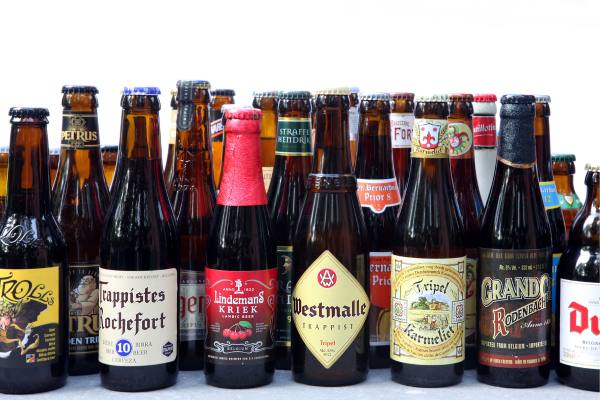
This produces unique flavors not found elsewhere within regular beer styles. Examples could range from fruit beer, spiced beer, chocolate stout and honey blonde ale – depending on what creative brewers come up with next.
Lagers and stouts are just two of the many different types of beer available, but there is a whole world of other specialty beers that can be explored to discover new flavors and styles. Next, let’s look at how hard cider brewing differs from regular beer brewing.
Main Takeaway: Beer is a broad category that encompasses many different styles, from lagers and ales to dark lagers, porters, brown ales, IPAs, Belgian-style ales and wild & sour beers. Each style has its own unique flavor profile ranging from sweet malty notes to hoppy bitterness or tartness. Specialty beers also exist which use unusual ingredients such as fruits or spices for even more unique flavors. No matter what kind of beer you prefer there’s something out there for everyone!
Specialty Beers for Home Brewers
Wild & Sour Ale
Wild and sour ales are a unique type of beer that is gaining popularity among home brewers. These beers are characterized by their tart, acidic flavor and complex aromas. They can range from light to dark in color, depending on the ingredients used. Common ingredients for wild and sour ales include wheat malt, rye malt, oak chips or barrels, fruit juices or purees, spices such as coriander or ginger, hops for bitterness and wild yeast strains like Brettanomyces bruxellensis or Saccharomyces cerevisiae var diastaticus. Home brewers should be aware that these beers require more time to ferment than other styles due to the complexity of the flavors they produce.
Specialty Beer
Specialty beers are those brewed with unusual ingredients such as fruits, vegetables, herbs and spices which are not typically found in traditional beer recipes. Popular examples include pumpkin ale (made with roasted pumpkins), honey wheat (made with honey instead of sugar) and chocolate stout (made with cocoa nibs).
Specialty beers can also be aged in wood barrels to add an additional layer of complexity to the flavor profile. When brewing specialty beers at home it is important to consider how each ingredient will interact during fermentation so that an unpalatable product is not produced. Additionally, using quality ingredients is essential for this style since they heavily contribute to its flavor profile.
Specialty beers are a great way to explore the brewing process and create unique flavors. Now, let’s look at the difference between larger and stout beers.
Brewing Tips for Home Brewers
Brewing beer at home can be a rewarding and enjoyable experience. It is important to understand the basics of brewing before attempting to make your own beer. This section will provide tips on how to brew beer at home successfully.
Choosing the Right Ingredients: The ingredients used in brewing are key to creating a great tasting beer. Selecting quality grains, hops, yeast, and water are essential for making a good batch of homebrewed beer.
Quality grains should be fresh and free from any foreign material or off-flavors that could affect the taste of your finished product. Hops should also be fresh and stored properly as they can quickly lose their flavor if not handled correctly. Yeast is an important factor in fermentation; choose one that is suitable for the style you are trying to create so it can do its job efficiently during fermentation.
Finally, use clean filtered water when possible as this will help ensure that there won’t be any unwanted flavors in your final product due to impurities found in tap water or other sources of water not meant for drinking purposes such as swimming pools or ponds etc..
Fermentation Processes: After selecting all of your ingredients it’s time to start fermenting! Fermenting is what turns sugar into alcohol and carbon dioxide which gives us our beloved bubbly beverage we call “beer”!
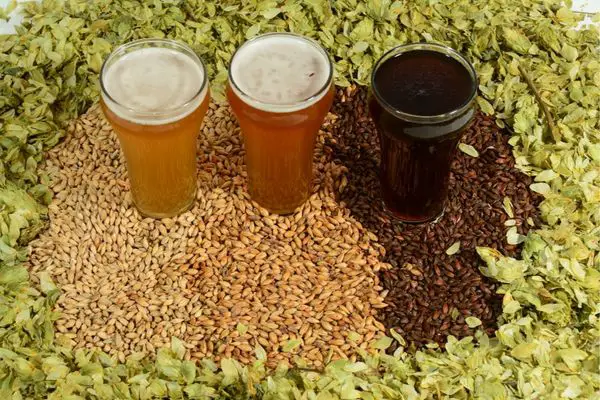
During this process temperature control plays an important role; too hot temperatures may cause off-flavors while too cold temperatures may slow down or even stop fermentation altogether resulting in flat beers with no bubbles whatsoever!
A good rule of thumb when starting out would be keeping your fermenter between 68°F – 72°F (20°C – 22°C). As you gain more experience you may want experiment with different temperatures depending on what type of beers you are making but these general guidelines should work well enough when starting out .
Once fermentation has completed, it is time for aging and storage. Most brewers let their beers sit anywhere from two weeks to several months depending on the type they have made; lagers usually require longer aging times than ales since they need colder storage conditions which take a longer period of time compared to ales, who only need room temperature storage conditions after primary fermentation has been completed.
When storing and aging, always keep airlocks filled with sanitizer solution, store away from direct sunlight, avoid drastic changes in temperature, and keep containers sealed tight unless transferring them somewhere else. All these factors play an important role when aging and storing our homebrews.
Brewing tips for home brewers are essential to creating a delicious and flavorful hard cider. With the right ingredients, fermentation processes, and aging and storage methods, you can create an enjoyable craft beverage that your friends will love. Let’s take a look at the different types of beer available to help you decide which one is best for your homebrew!
Main Takeaway: Brewing beer at home requires careful selection of quality ingredients, proper fermentation processes and temperature control, and the right storage conditions. Achieving a great tasting beer depends on these factors; using fresh grains, hops, yeast and clean water will help ensure that your homebrew has all the flavors you want it to have. Additionally, controlling temperatures during fermentation as well as storing away from direct sunlight in sealed containers are important steps for aging and storing your beers properly.
Conclusion
In conclusion, it is important to understand the difference between lagers and other types of beers. Lagers are generally light in color, have a crisp taste and low hop bitterness.
Other types of beer such as dark lagers, pilsners, Porter, ales, brown ales, India Pale Ales (IPA), Belgian-Style Ale, Wild & Sour Ale and Specialty Beer all offer unique flavor profiles that can satisfy any beer enthusiast’s palate.
While stouts are not included in this discussion about the difference between larger and stout beers due to their distinct characteristics from other styles of beer mentioned above; they remain an integral part of craft brewing culture nonetheless.


